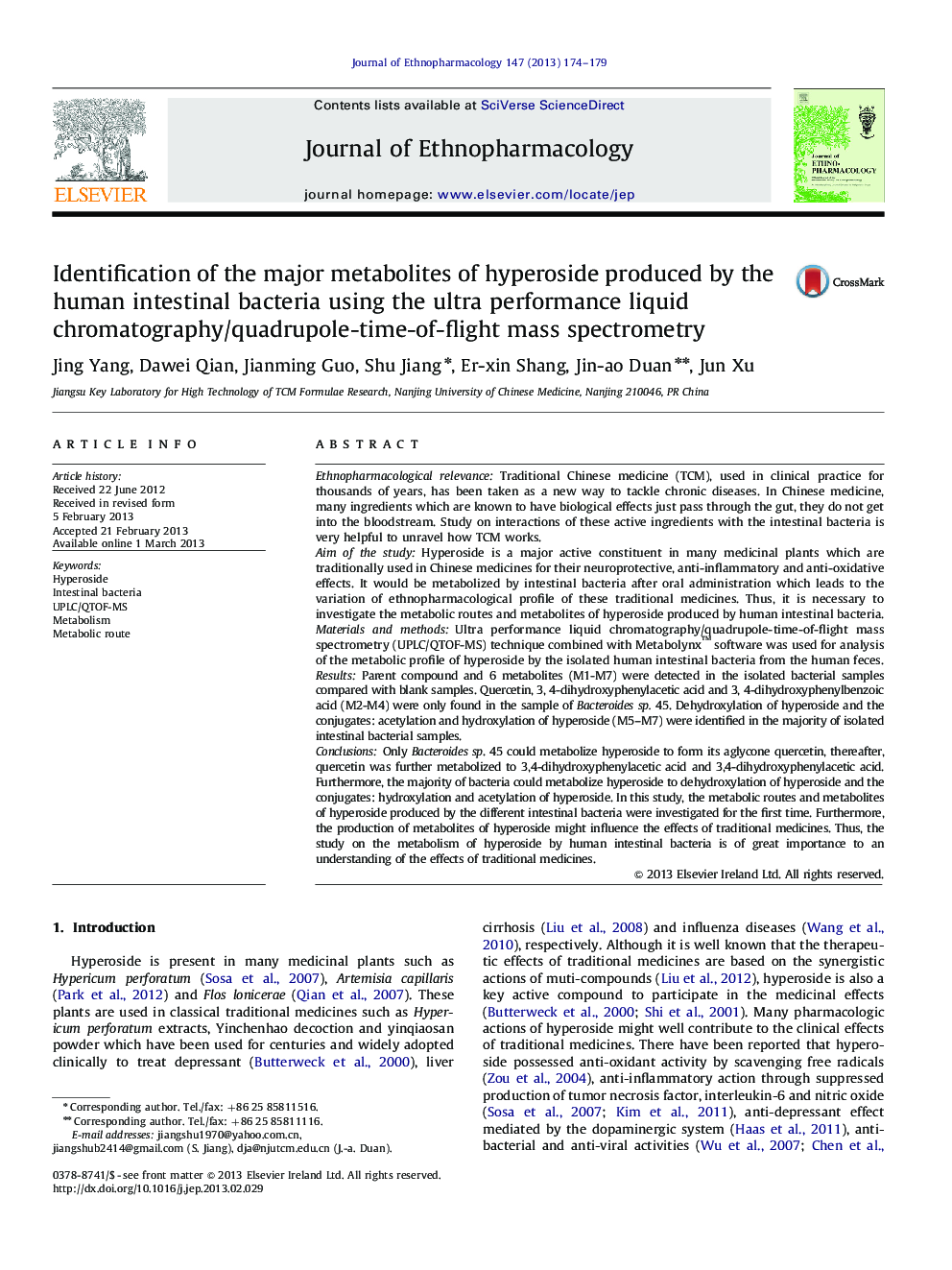| Article ID | Journal | Published Year | Pages | File Type |
|---|---|---|---|---|
| 5837533 | Journal of Ethnopharmacology | 2013 | 6 Pages |
Ethnopharmacological relevanceTraditional Chinese medicine (TCM), used in clinical practice for thousands of years, has been taken as a new way to tackle chronic diseases. In Chinese medicine, many ingredients which are known to have biological effects just pass through the gut, they do not get into the bloodstream. Study on interactions of these active ingredients with the intestinal bacteria is very helpful to unravel how TCM works.Aim of the studyHyperoside is a major active constituent in many medicinal plants which are traditionally used in Chinese medicines for their neuroprotective, anti-inflammatory and anti-oxidative effects. It would be metabolized by intestinal bacteria after oral administration which leads to the variation of ethnopharmacological profile of these traditional medicines. Thus, it is necessary to investigate the metabolic routes and metabolites of hyperoside produced by human intestinal bacteria.Materials and methodsUltra performance liquid chromatography/quadrupole-time-of-flight mass spectrometry (UPLC/QTOF-MS) technique combined with Metabolynx⢠software was used for analysis of the metabolic profile of hyperoside by the isolated human intestinal bacteria from the human feces.ResultsParent compound and 6 metabolites (M1-M7) were detected in the isolated bacterial samples compared with blank samples. Quercetin, 3, 4-dihydroxyphenylacetic acid and 3, 4-dihydroxyphenylbenzoic acid (M2-M4) were only found in the sample of Bacteroides sp. 45. Dehydroxylation of hyperoside and the conjugates: acetylation and hydroxylation of hyperoside (M5-M7) were identified in the majority of isolated intestinal bacterial samples.ConclusionsOnly Bacteroides sp. 45 could metabolize hyperoside to form its aglycone quercetin, thereafter, quercetin was further metabolized to 3,4-dihydroxyphenylacetic acid and 3,4-dihydroxyphenylacetic acid. Furthermore, the majority of bacteria could metabolize hyperoside to dehydroxylation of hyperoside and the conjugates: hydroxylation and acetylation of hyperoside. In this study, the metabolic routes and metabolites of hyperoside produced by the different intestinal bacteria were investigated for the first time. Furthermore, the production of metabolites of hyperoside might influence the effects of traditional medicines. Thus, the study on the metabolism of hyperoside by human intestinal bacteria is of great importance to an understanding of the effects of traditional medicines.
Graphical abstractDownload high-res image (164KB)Download full-size image
